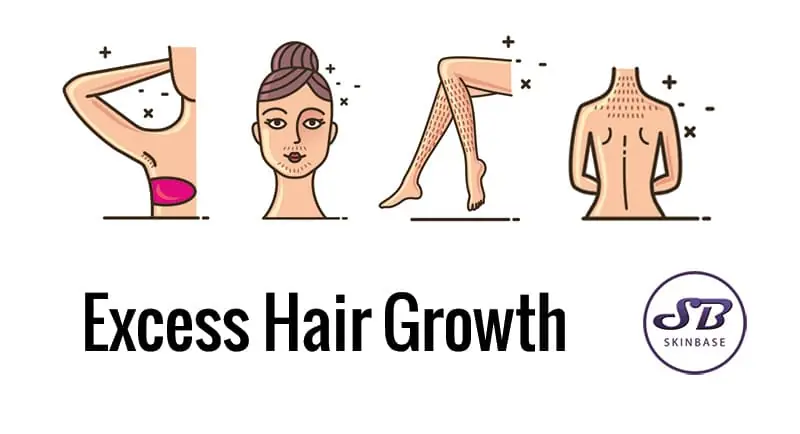Excess hair growth ‘Hirsutism’ is a problem that mainly affects women. It is fairly common, affecting about 10% of women and is more prevalent in those of Middle Eastern or Mediterranean descent. The hair is usually thick and dark developing in areas that men would usually have hair, such as:
- Chin and neck area
- Upper lip
- On the chest
- The tummy area
- Lower back
Causes of excess hair
There is not always a clear reason why someone develops excessive hair growth. In younger women, the most common cause is Polycystic ovary syndrome. This can cause; high levels of male hormones, acne, irregular periods and fluid-filled sacs, ‘cysts’ which surround the eggs. The menopause can also be a trigger for excessive hair growth, hormonal imbalances can result in an excess of male hormones in the body.
Other less common causes include:
- Cushing’s syndrome
- Tumour
- Obesity
- Medicines such as steroids
- Treatments
The problem with treating excess hair caused by hormone changes is even ‘permanent’ solutions like Electrolysis, IPL and Laser can show regrowth. Hair growth is a hormonal process, and the hormonal imbalance in PCOS sufferers means hair is, unfortunately, more likely to grow back. Many IPL clinics will offer a special ongoing discount for those with PCOS because of this.
Other alternatives for treating excess hair include:
- Waxing
- Hair removal cream
- Electrolysis
- Laser hair removal
- IPL
- Contraceptive pill
If you suffer from Hirsutism you may use a combination of these treatments to keep hair growth under control. For more information about IPL treatments for hair reduction, click here. You can contact us directly by email for more information about your nearest IPL clinic: [email protected]
So how does IPL work for permanent hair reduction?
Removal of hair using IPL works by targeting the melanin in the hair with quick pulses of light. This light energy converts to heat within the follicle. When sufficient heat has built up the follicle will break down and be unable to produce a new hair. This process is most effective in the ‘anagen’ phase of hair growth. Approximately 30% of hairs are in this stage of growth at any one time, therefore, to achieve the most permanent results a course of treatments is required. No IPL or Laser system will ever achieve 100% permanent results. Typically 6-10 treatments may be needed at intervals of 4-6 weeks to see long lasting results. Any hair re-growth you do have will be softer and finer than before.

